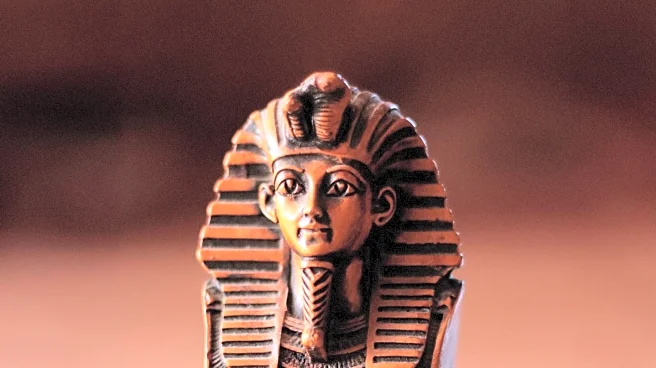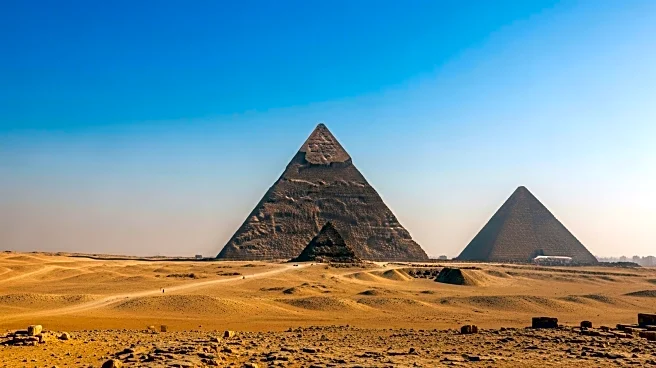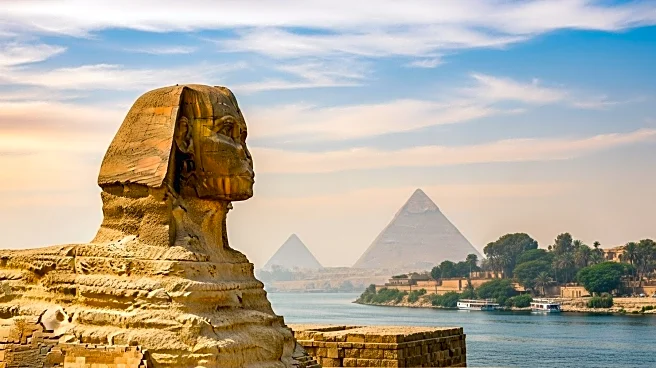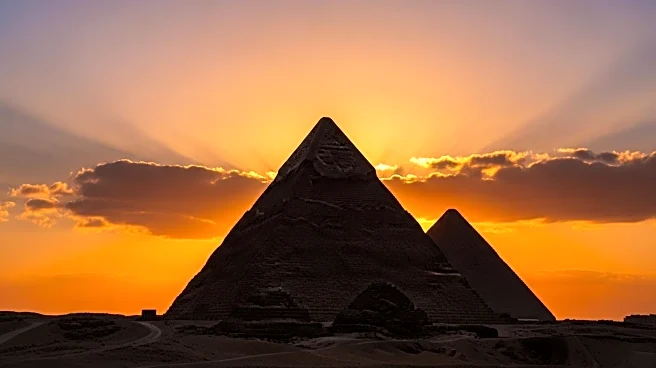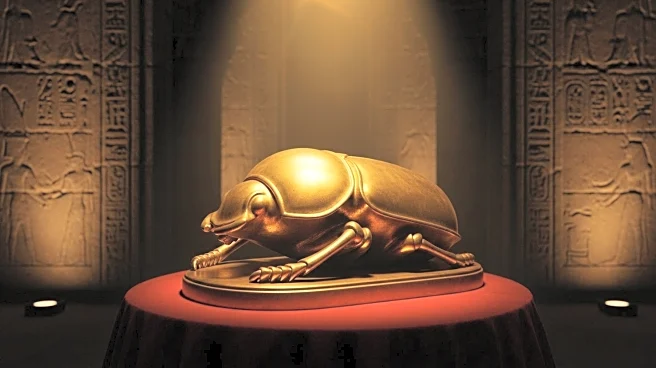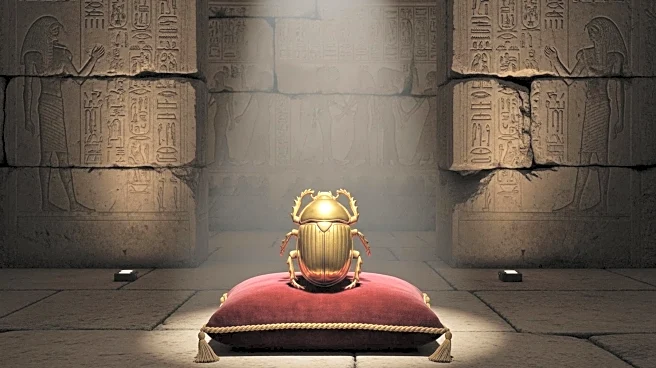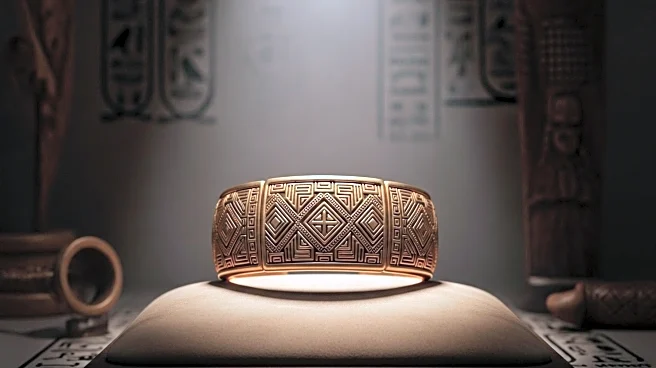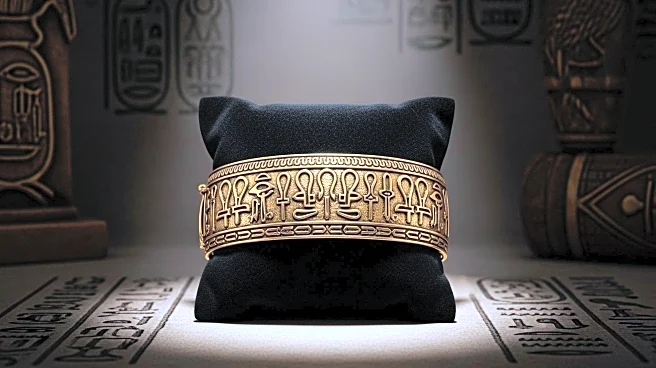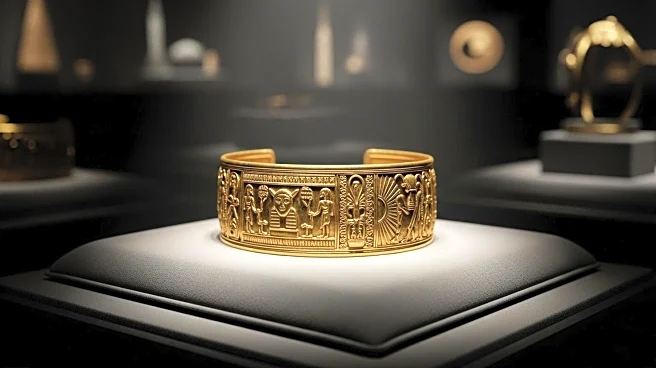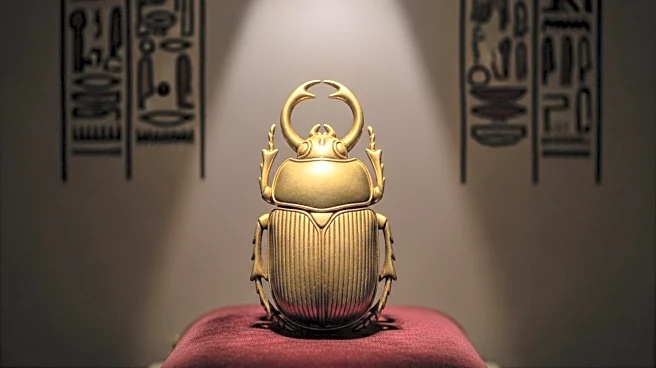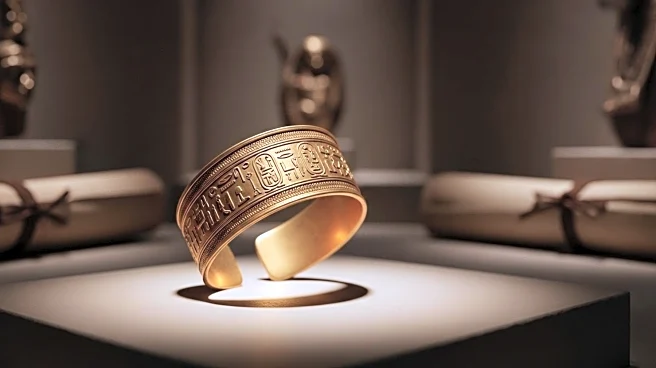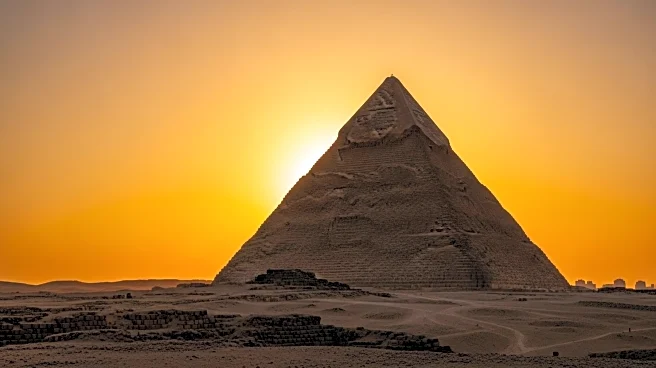What is the story about?
What's Happening?
Alfred Lucas, a renowned chemist, played a crucial role in preserving the treasures of King Tutankhamun's tomb after its discovery by Howard Carter in 1922. Lucas was dispatched by Egyptian authorities to assist with the excavation and conservation of the fragile artifacts, which included gold funerary masks, thrones, and chariots. His expertise in forensic science and chemistry was instrumental in ensuring the longevity of these ancient objects, which are set to be showcased at Cairo's new Grand Egyptian Museum. Lucas's work involved intricate conservation techniques to prevent damage from environmental factors.
Why It's Important?
Lucas's contributions to the preservation of King Tut's treasures have had a lasting impact on archaeology and conservation science. His methods set a precedent for the treatment of ancient artifacts, ensuring their survival for future generations. The successful preservation of these treasures enhances cultural heritage and tourism in Egypt, attracting global interest and contributing to the country's economy. Lucas's work also underscores the importance of interdisciplinary collaboration in archaeological endeavors.
Beyond the Headlines
Lucas's work highlights the ethical considerations in artifact conservation, balancing preservation with the need for public access and education. His approach to conservation has influenced modern practices, emphasizing the importance of scientific analysis in understanding and preserving cultural heritage. The story of King Tut's treasures continues to captivate audiences, reflecting the enduring fascination with ancient civilizations and their legacies.
AI Generated Content
Do you find this article useful?
